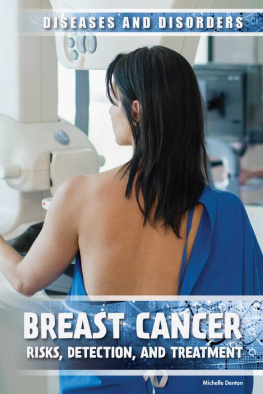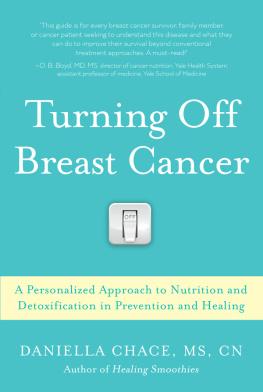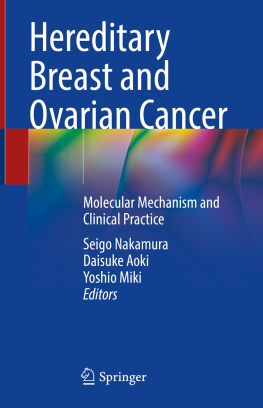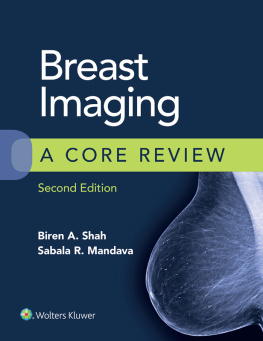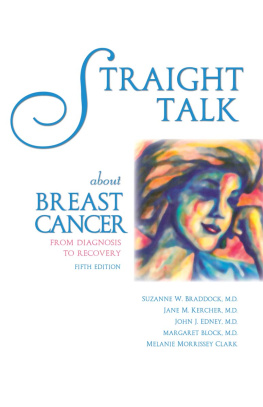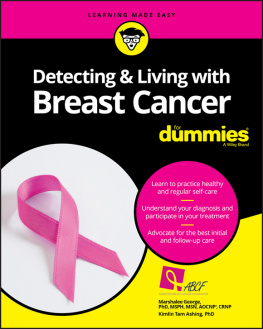Joi L. Morris - Positive Results: Making the Best Decisions When Youre at High Risk for Breast or Ovarian Cancer
Here you can read online Joi L. Morris - Positive Results: Making the Best Decisions When Youre at High Risk for Breast or Ovarian Cancer full text of the book (entire story) in english for free. Download pdf and epub, get meaning, cover and reviews about this ebook. year: 2010, publisher: Prometheus, genre: Home and family. Description of the work, (preface) as well as reviews are available. Best literature library LitArk.com created for fans of good reading and offers a wide selection of genres:
Romance novel
Science fiction
Adventure
Detective
Science
History
Home and family
Prose
Art
Politics
Computer
Non-fiction
Religion
Business
Children
Humor
Choose a favorite category and find really read worthwhile books. Enjoy immersion in the world of imagination, feel the emotions of the characters or learn something new for yourself, make an fascinating discovery.
- Book:Positive Results: Making the Best Decisions When Youre at High Risk for Breast or Ovarian Cancer
- Author:
- Publisher:Prometheus
- Genre:
- Year:2010
- Rating:4 / 5
- Favourites:Add to favourites
- Your mark:
Positive Results: Making the Best Decisions When Youre at High Risk for Breast or Ovarian Cancer: summary, description and annotation
We offer to read an annotation, description, summary or preface (depends on what the author of the book "Positive Results: Making the Best Decisions When Youre at High Risk for Breast or Ovarian Cancer" wrote himself). If you haven't found the necessary information about the book — write in the comments, we will try to find it.
This unique and important guidebook is a single, comprehensive source of information and advice to help women (and some men) at high risk for breast and for ovarian cancer because of family history and genetic profile. One part memoir, three parts how to manual, Positive Results explains in a clear and steady manner the myths and realities of the breast cancer genes. It lays out all the options in easy-to-follow, compassionate language. It will help women and men decide if they want to pursue genetic testing, guide them in interpreting their test results, and give them a sound basis for making the life-saving decisions required to manage their risks.
Authors Joi Morris and Dr. Ora Karp Gordon cover all of the latest medical options, including genetic testing for breast cancer risk, breast cancer surveillance, assessing risk, mastectomy and breast reconstruction techniques, ovarian cancer surveillance, surgery, managing menopause, and cancer risks in men who carry mutations on BRCA genes. Along the way, Joi tells her personal story and that of other women and men who have made the gut-wrenching decisions required to survive in this world of astronomical risk. At the age of forty-two, Joi learned that she has a genetic mutation on a gene known as BRCA2. The test results meant that her risk of getting breast cancer could be as high as 84 percent by age seventy, and that her risk for ovarian cancer was also high. Compounding her risk was the fact that her mother had developed breast cancer in her forties. After much research and consultation, the result of which is this book, Joi made the difficult decision of undergoing prophylactic mastectomies.
This straightforward and practical approach combined with the poignant personal experience of a woman at risk facing these challenging decisions will provide readers with the feeling that they have had the benefit of a long conversation with both a trusted physician and a friend who has just gone through the same uncertainties they are facing.
Joi L. Morris: author's other books
Who wrote Positive Results: Making the Best Decisions When Youre at High Risk for Breast or Ovarian Cancer? Find out the surname, the name of the author of the book and a list of all author's works by series.


